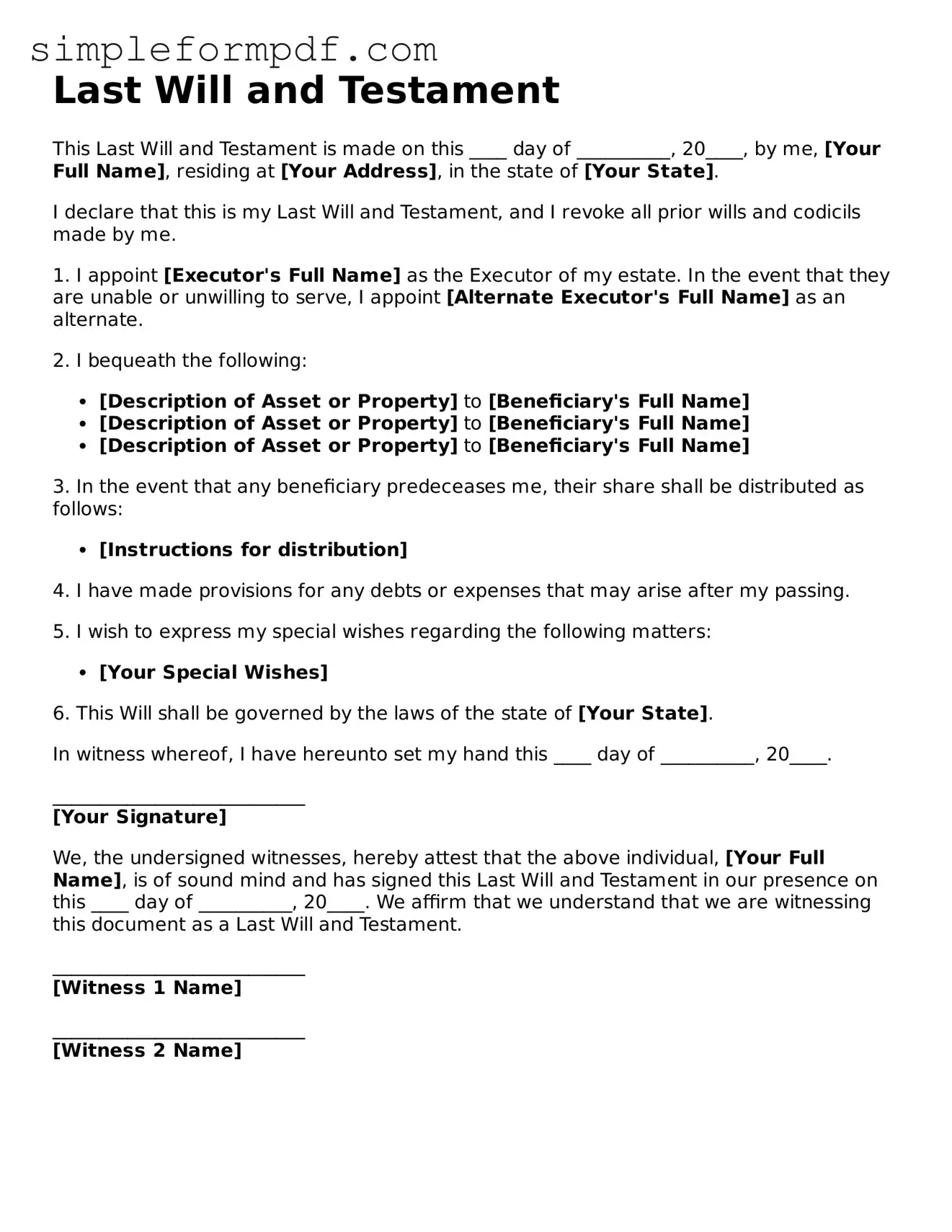Last Will and Testament
This Last Will and Testament is made on this ____ day of __________, 20____, by me, [Your Full Name], residing at [Your Address], in the state of [Your State].
I declare that this is my Last Will and Testament, and I revoke all prior wills and codicils made by me.
1. I appoint [Executor's Full Name] as the Executor of my estate. In the event that they are unable or unwilling to serve, I appoint [Alternate Executor's Full Name] as an alternate.
2. I bequeath the following:
- [Description of Asset or Property] to [Beneficiary's Full Name]
- [Description of Asset or Property] to [Beneficiary's Full Name]
- [Description of Asset or Property] to [Beneficiary's Full Name]
3. In the event that any beneficiary predeceases me, their share shall be distributed as follows:
- [Instructions for distribution]
4. I have made provisions for any debts or expenses that may arise after my passing.
5. I wish to express my special wishes regarding the following matters:
6. This Will shall be governed by the laws of the state of [Your State].
In witness whereof, I have hereunto set my hand this ____ day of __________, 20____.
___________________________
[Your Signature]
We, the undersigned witnesses, hereby attest that the above individual, [Your Full Name], is of sound mind and has signed this Last Will and Testament in our presence on this ____ day of __________, 20____. We affirm that we understand that we are witnessing this document as a Last Will and Testament.
___________________________
[Witness 1 Name]
___________________________
[Witness 2 Name]
